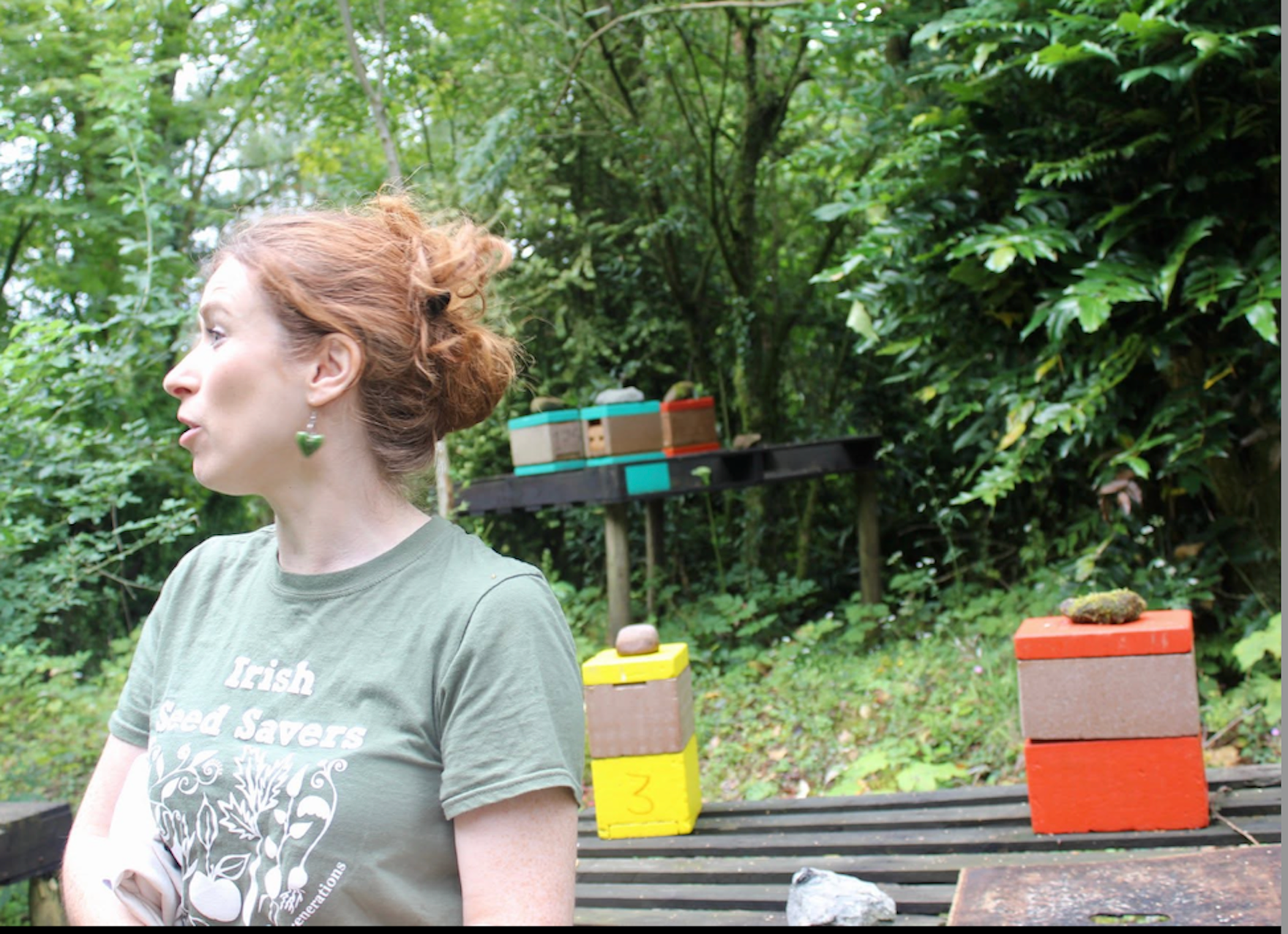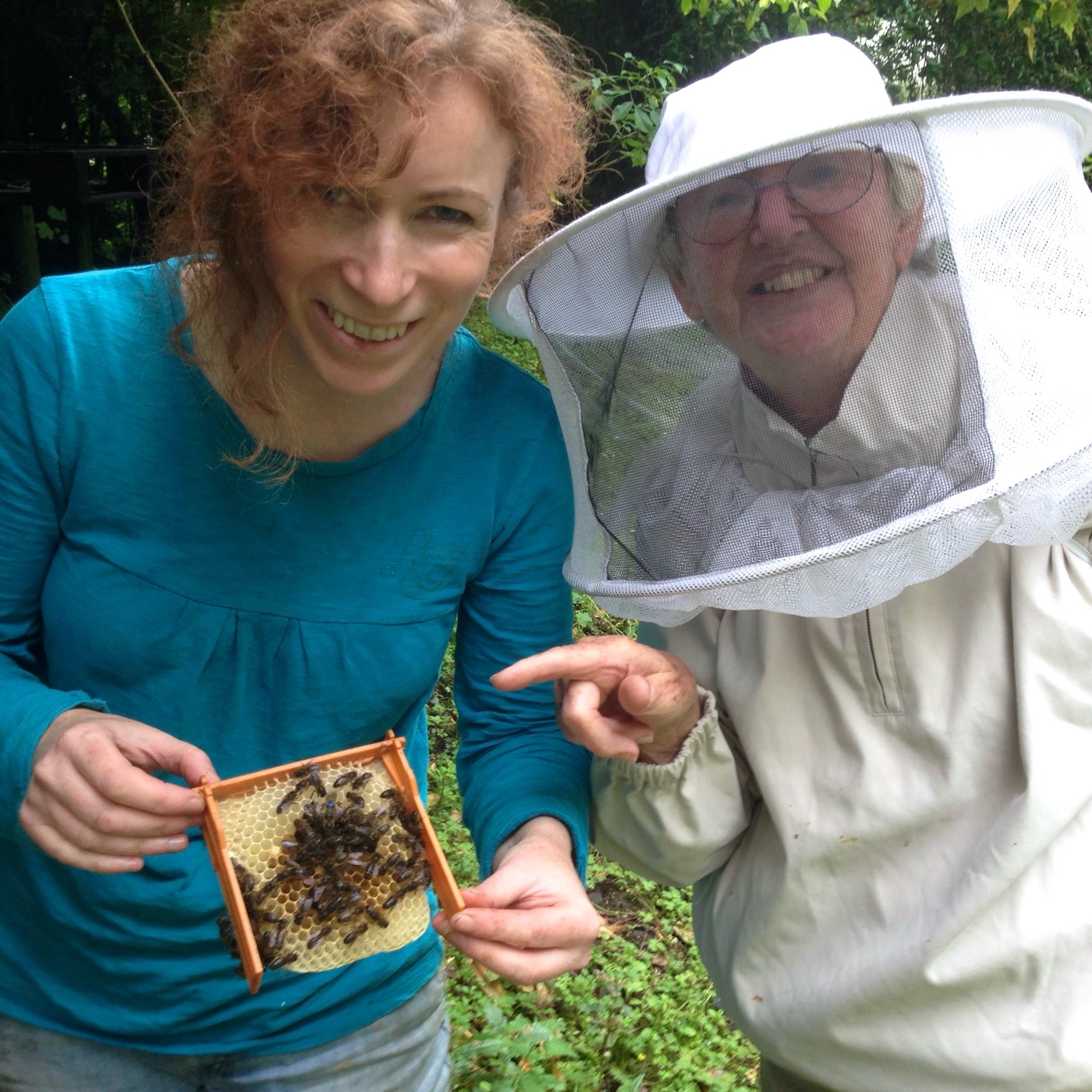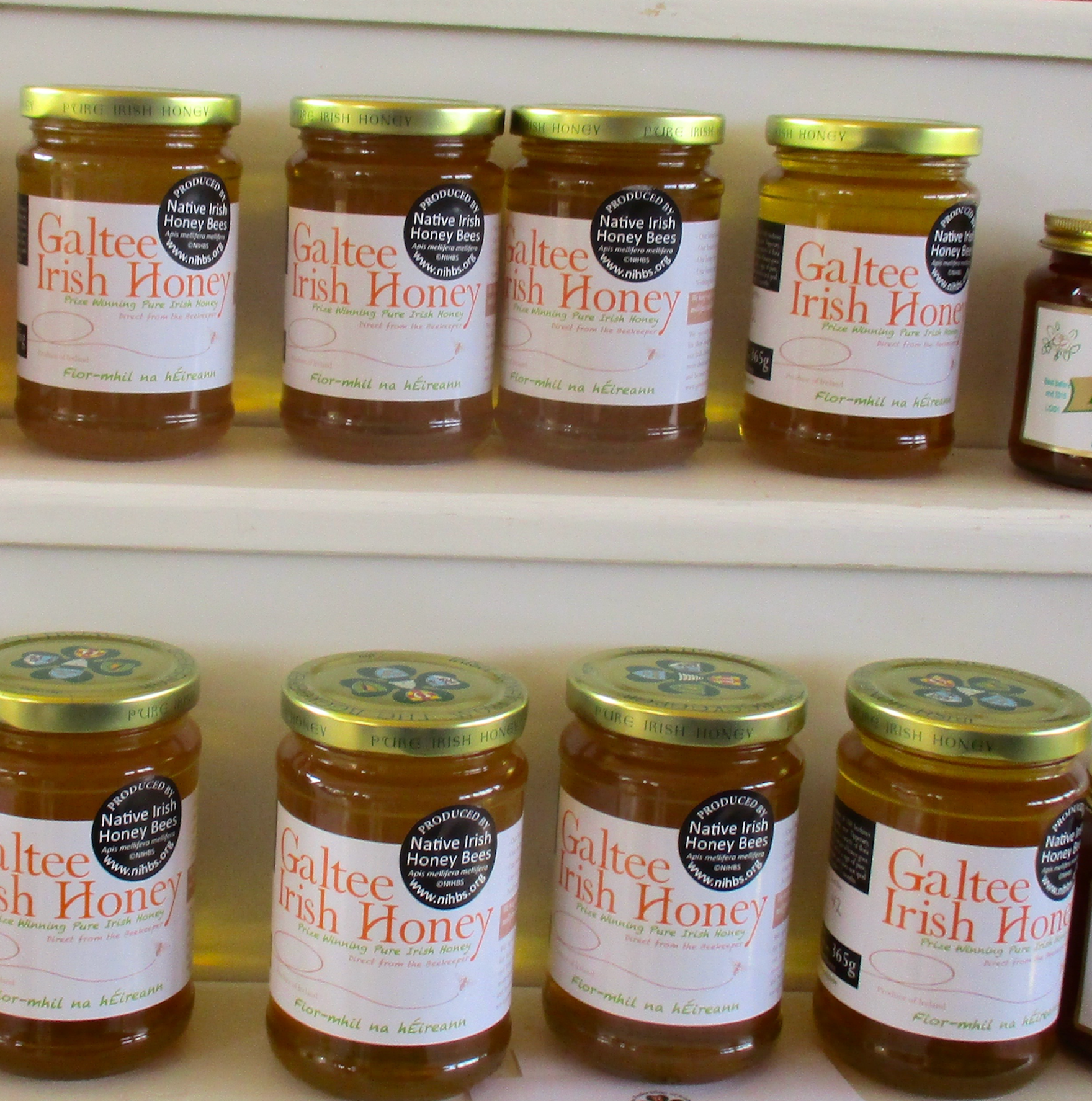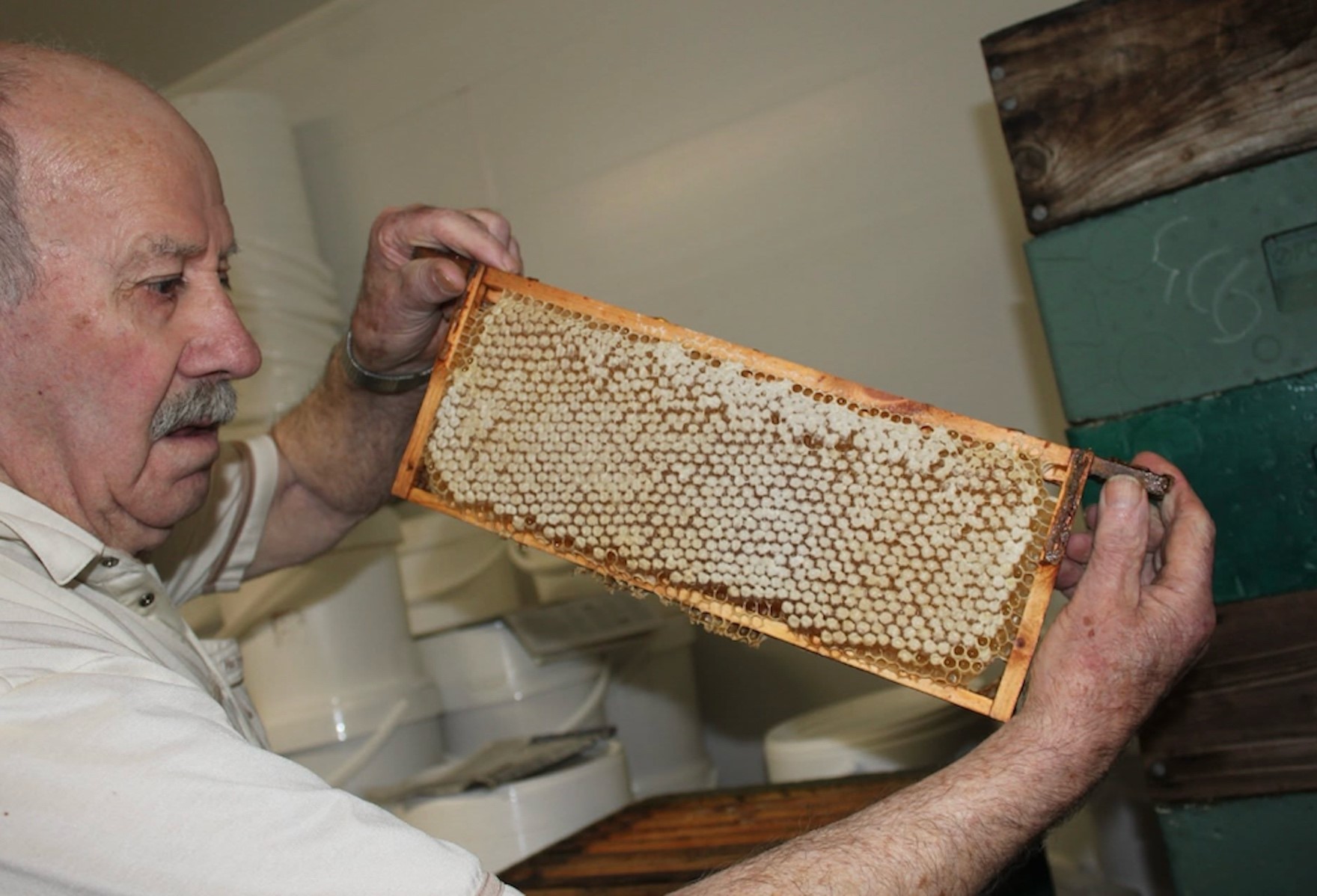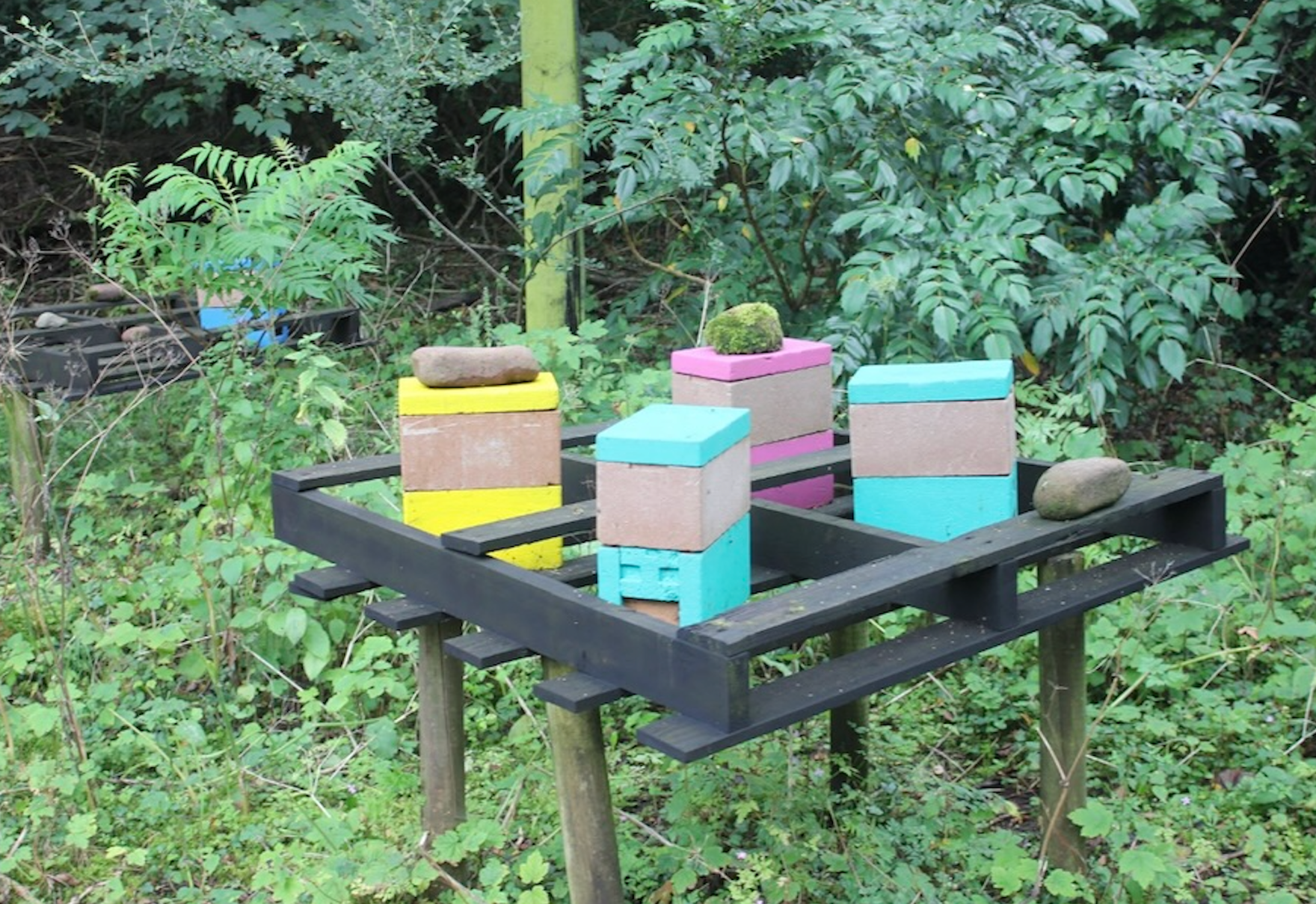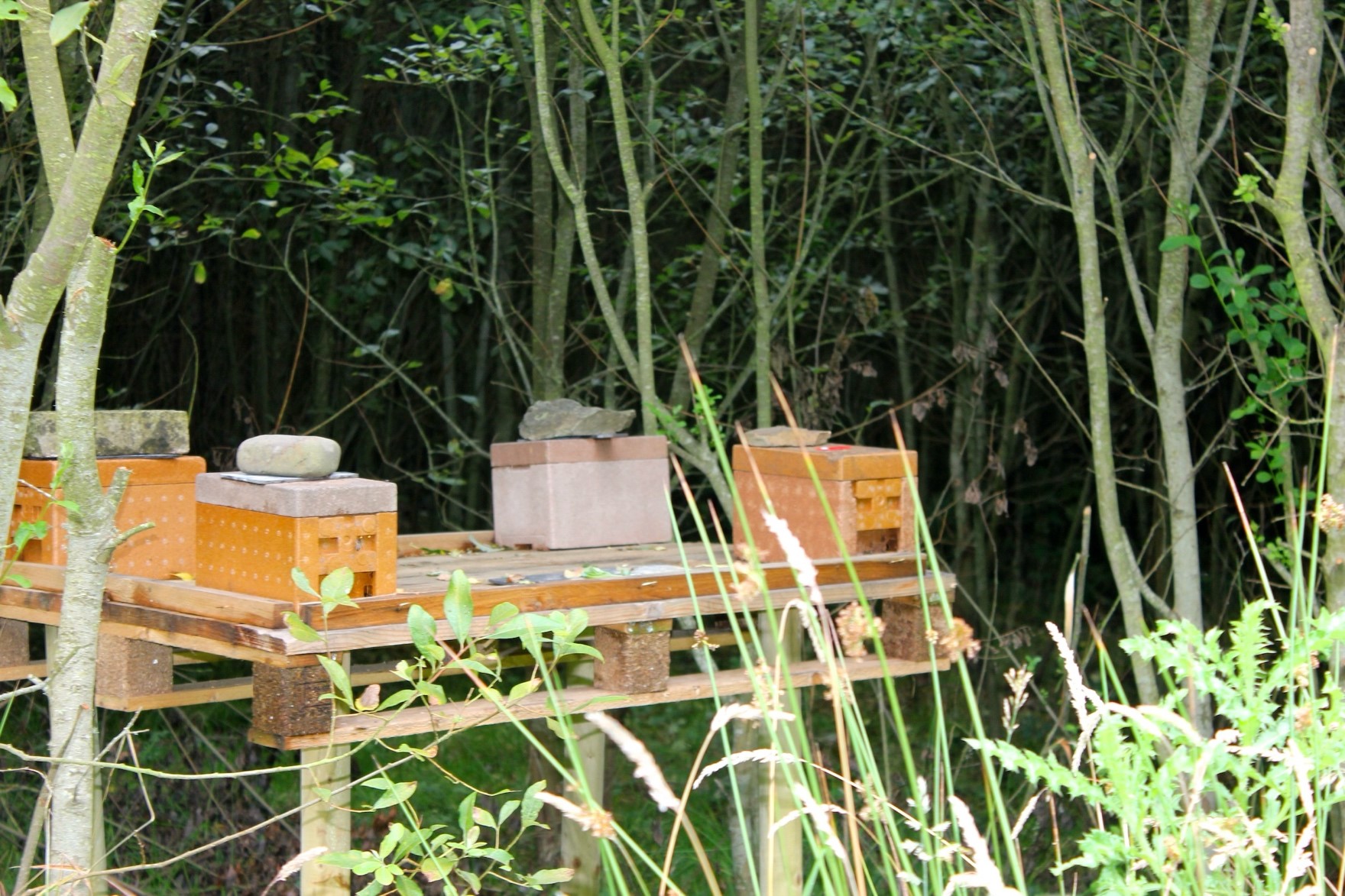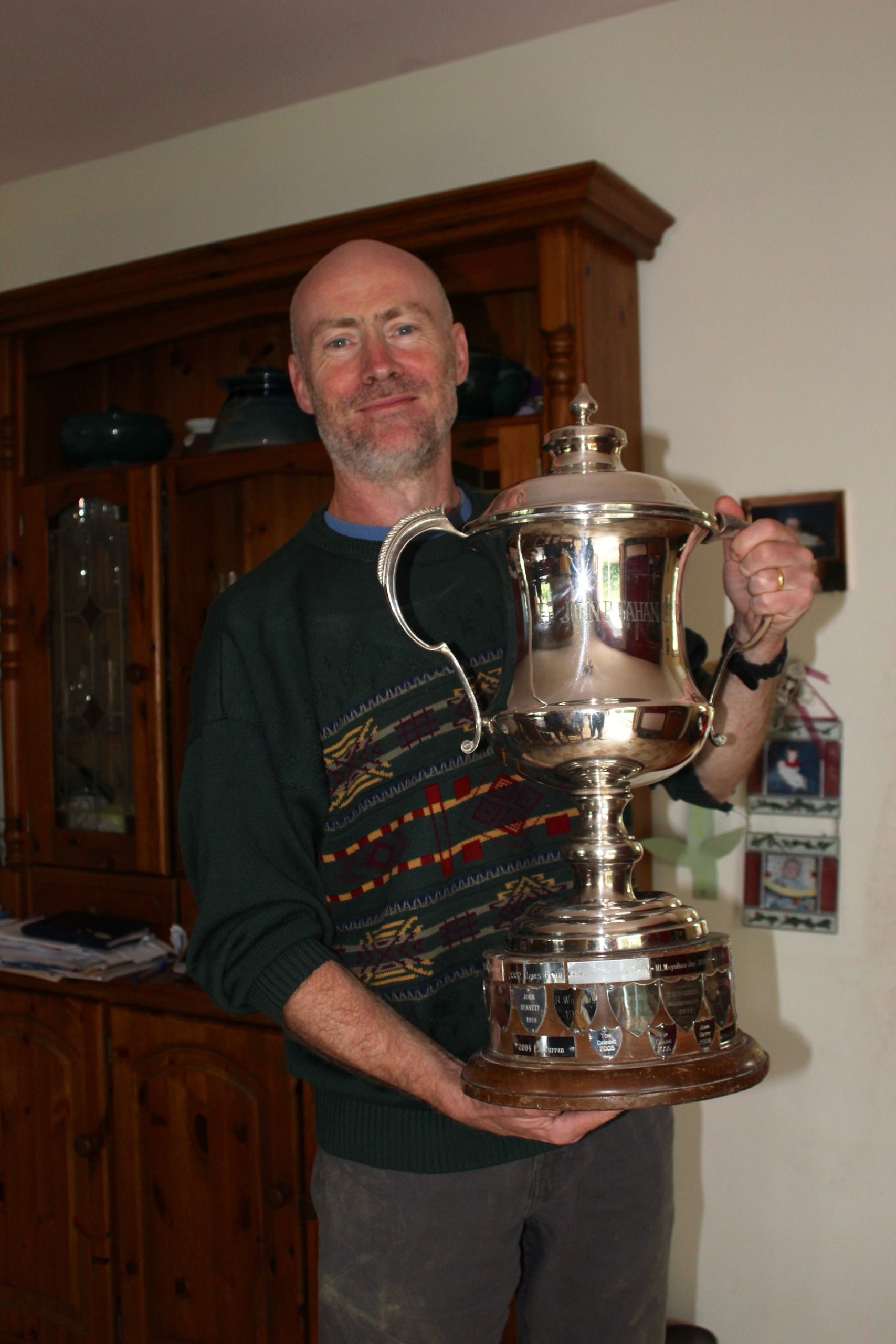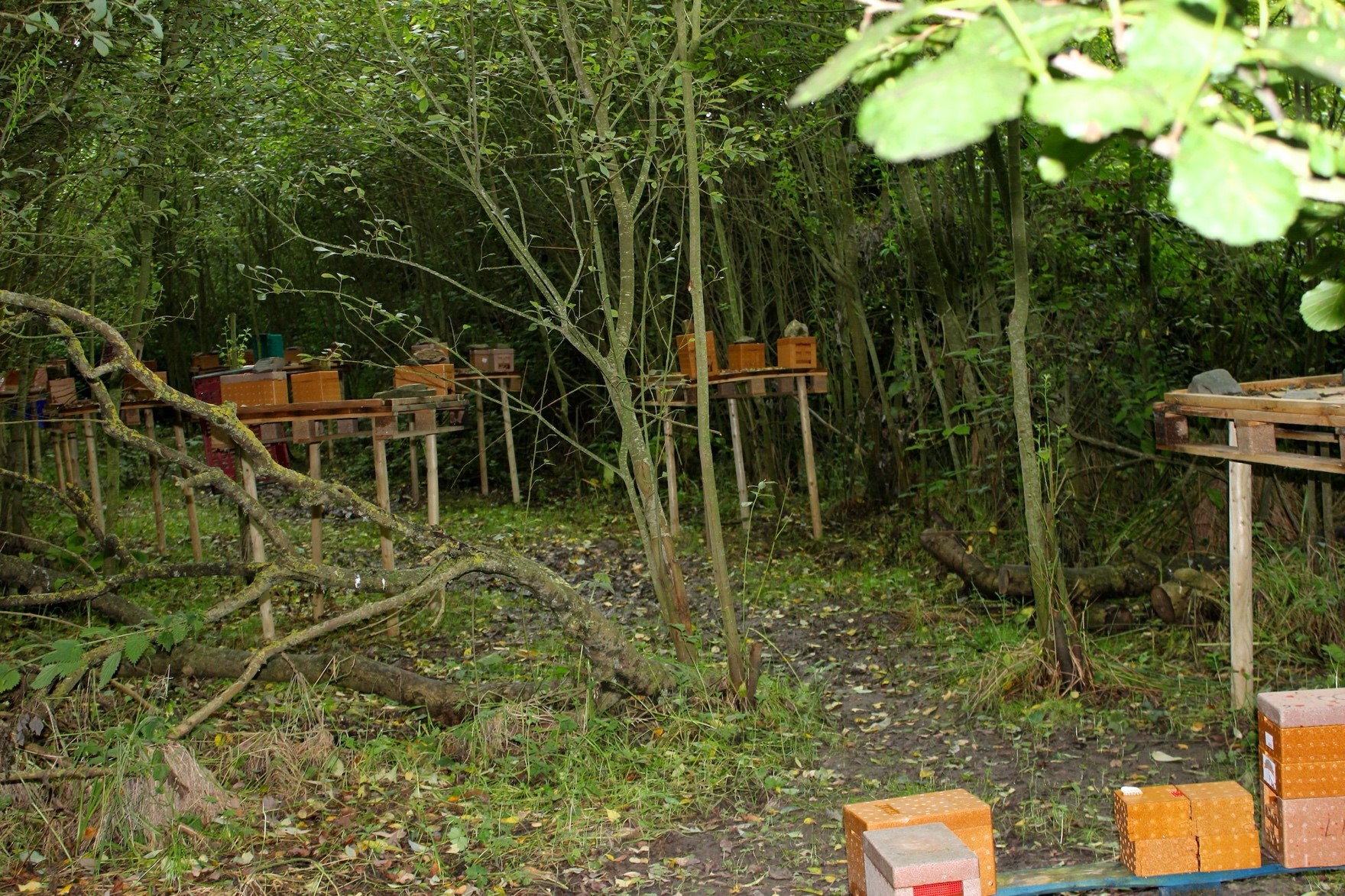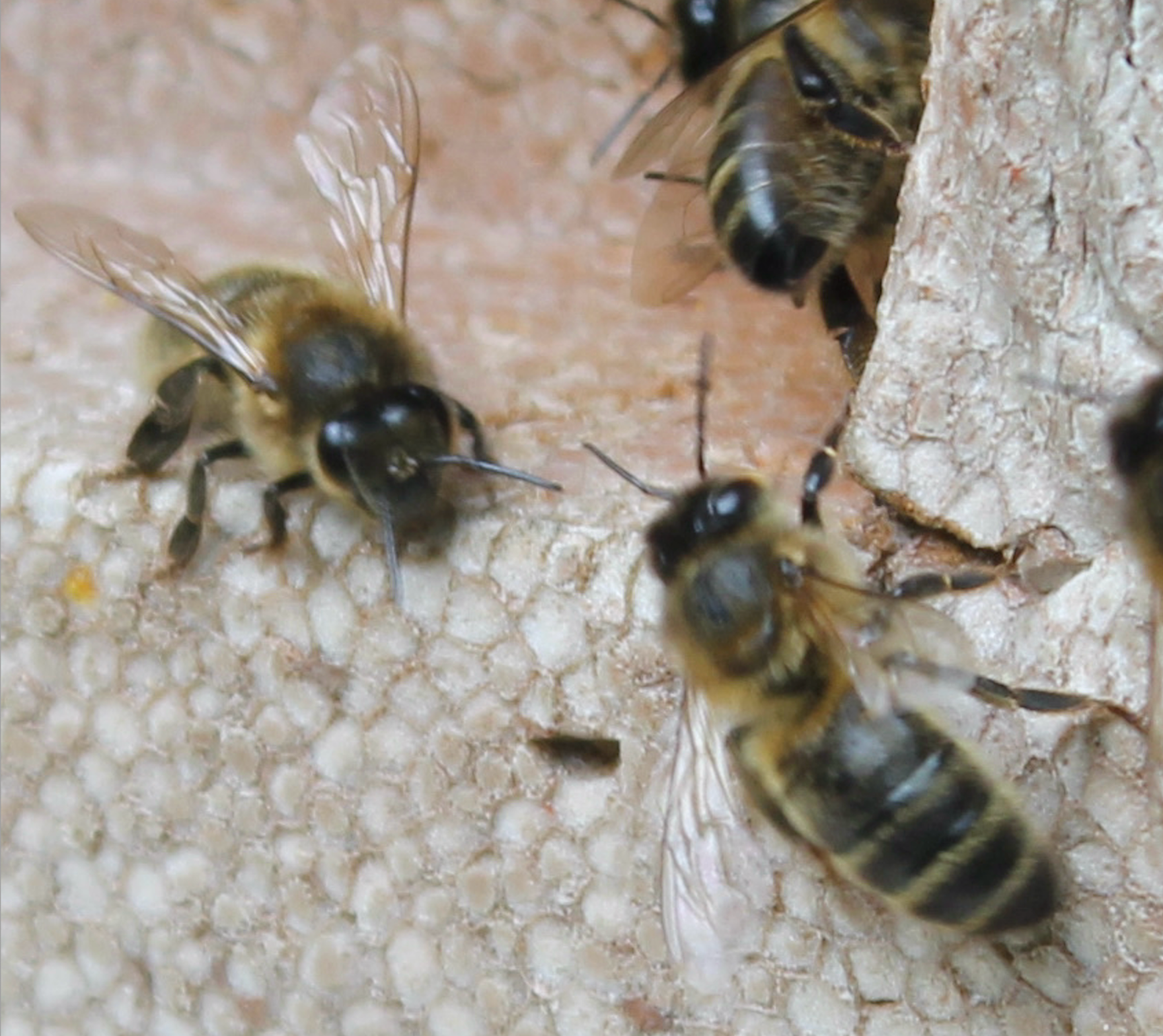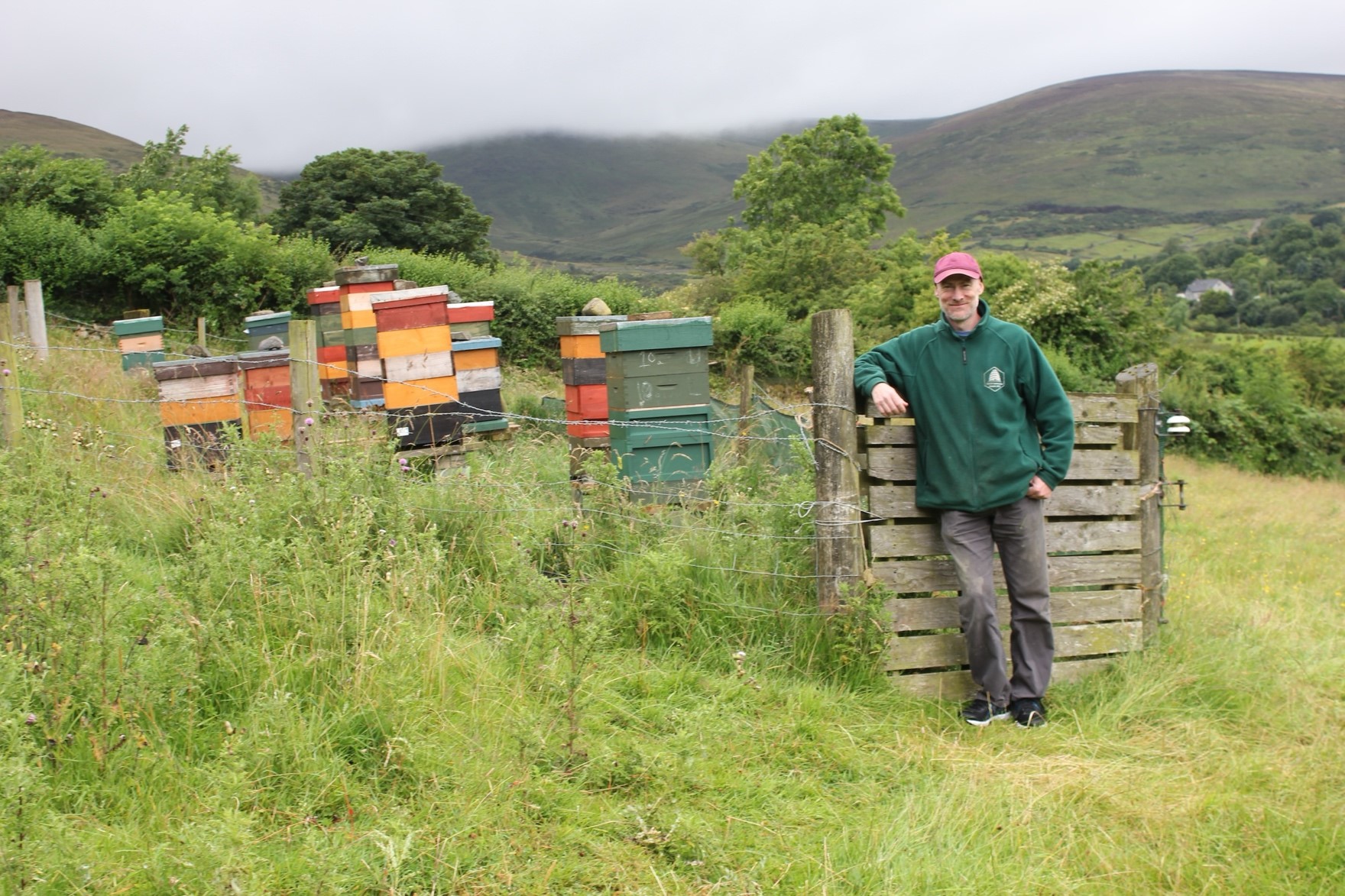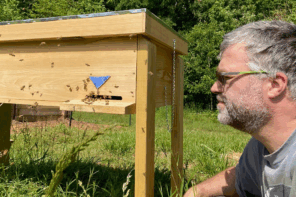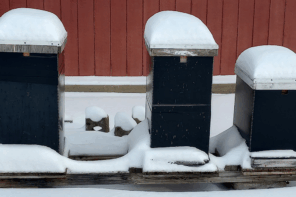By: Ettamarie Peterson
The first time I saw the native Irish honey bee flying in the light mist I knew the Irish beekeepers had a reason to work so hard to save the genetics of their native bee. I was at the Federation of Irish Beekeepers Associations annual Summer course in Gormanston in 2015 with my granddaughter Jessie Peterson. The beekeepers had brought in several colonies of bees to provide hands on classes for the participants. The colonies were all native Irish bees. We thought these bees must be carrying umbrellas because they were not at all bothered by the fine mist happening some of the times during the course! It was truly amazing! Characteristics of the Native Irish Honey Bee include rapid response to changeable weather; foraging at low temperatures, even in the rain; frugal overwintering; rapid spring build up; good, dependable honey production; low-swarming behavior; and docile. 95% of the beekeepers in Ireland keep the native bees.
I was able to see how docile they were when I took the course teaching us how to stock the apideas (mini-mating nucs are what we call them in the USA) with a cup of nurse bees each. The instructor took frames of brood with bees and shook them into a deep container and then jiggled them to let the forager bees fly back to the hive leaving the young nurse bees in the bottom. Then he took cups of those bees to add to the apideas for queen rearing. This process did not upset the docile Native Irish honey bees at all.
A study by the University of Galway scientists have determined that the native Irish honey bee is smaller and hairier than European species and has a distinct ecotype. Lorna Siggins reported in the October 15, 2024 edition of the Irish Independent that the study was led by PhD student Alexandra Valentine and took two years of testing 505 colonies across 27 counties of the island of Ireland. She quotes Ms. Valentine saying, “The fact that it is smaller and hairier, with a broad abdomen, shorter legs and a shorter proboscis, shows it is uniquely adapted to the Irish landscape and climate.” The importation of a variety of other honey bee species has caused introgression and cross breeding.
All the Irish beekeeping associations have called for a ban on the importations of imports of non-native bees to the island. They are working tirelessly to get the government to make this the law. They started in the late 1980’s. At one point in time there was a belief that Apis mellifera mellifera was extinct. In 1923 the IBA committee reported the country was ”swept clean of bees”. This opened the importation of Brother Adams’ Buckfast bees, a bee thought to be resistant to the disease, and other bees from parts of Europe.
A bill to prohibit imports of non-native honey bees was introduced into the Seanad and received full cross-party support. However, the bill has been paused until the completion of a review commissioned by DAFM into the threat facing Amm.
In the meantime, to prevent further worsening of the hybridization problem, under the precautionary principle an interim ban on imports is urgently required. The Native Irish Honey Bee Society warns that if hybridization continues at the current rate, there may soon be nothing left to preserve! Precedents for the legal protection of native honey bee subspecies exist in EU and other countries as evidenced by conservation areas in Slovenia (the entire country), Denmark, France, Switzerland, Corsica, Malta, Italy, Sweden, Norway, Belgium, Netherlands, Canary Islands, Scotland and the Isle of Man. NIHBS is an active member of SICAMM, the International Association for the Protection of the Dark European Honey Bee, which works to conserve the remaining populations of Amm across Europe.
Before the Native Irish Bee Society was formed, the Galtee Bee Breeding Group was started in 1991by Micheál C. Mac Giolla Coda to conserve the species. His method of controlled queen mating includes the “Dun Aonghusa” System, a semi-isolated mating apiary in the Galtee Mountains. Every beekeeper in The Galtee-Vee Valley below uses native bees so it is a pure breeding zone. He also uses time isolation which involves dequeening selected colonies late in the season so that they hold on to their drones and instrumental insemination. (This information was found in the pamphlet by Micheál Mac Giolla Coda titled “Banriona Dorch na nGailte Dark Galtee Queens”.)
The Native Irish Honey Bee Association was established in November 2012. It was organized to carry on and expand the number of beekeepers dedicated to raising the pure native Irish honey bee. They have voluntary conservation areas in both the Irish Republic and Northern Ireland. They are working very hard to get a law passed banning the importation of other bees into Ireland. In the Republic of Ireland, legislation to prohibit imports of non-native honey bees was introduced into the Seanad and received full cross-party support. However, the bill has been paused until the completion of a review commissioned by DAFM into the threat facing Amm.
NIHBS has established over 40 queen rearing groups throughout the island of Ireland since 2021. The members are working on breeding pure stocks and encouraging all beekeepers to use these pure native Irish Honey Bees.
After my week at the beekeepers’ s school, my granddaughter Jessie Peterson, her father Lew Peterson and I were able to visit the Galtee Honey Bee Farm. Jessie and I had met Micheál C. Mac Giolla Coda and his daughter Aoife Nic Giolla Coda at Gormanston and were invited to visit their wonderful farm and see the apiary in the Galtee Mountains.
The Galtee Honey Farm is home to 200 colonies of Native Irish Black Honey Bees. It is at the edge of the picturesque Glengarra Wood in the Galtee Vee Valley. The bees are placed throughout the countryside where the three counties of Tipperary, Limerick and Cork meet. It was established by Micheál Mac Giolla Coda in 1970. Micheál told us he had a career as a forestor of Glengarra Forest. He also grew up with beekeeping. He decided to continue the family tradition, and to breed the Native Black Honey Bee of Ireland which was at one time under threat of extinction.
The skills and knowledge he has acquired over the years have been handed down to his 6 children, including his daughter Aoife who officially took over Galtee Honey Farm in 2013. Her children Hannah and Micheál are currently learning about bees and beekeeping. Micheál and Aoife are both certified beekeeping lecturers. They teach beekeeping skills to others through lectures, beginners’ courses and workshops at beekeeping clubs around Ireland. We felt honored to be their guests and learned a lot while we visited not once but twice.
Micheál is a former president of the Federation of Irish Beekeepers Associations (FIBKA) and the Bee Improvement & Bee Breeders Association (BIBBA). Micheál is also a honey judge, having judged at honey competitions and shows both in Ireland and abroad. Beekeeping for both Micheál and Aoife at Galtee Honey Farm is a vocation and a way of life. It is driven mainly by the need to protect and nurture the Native Irish honey bees.
They rear Native Irish Black Queen Bees (Apis mellifera mellifera) and are the main breeder in the Republic of Ireland of these queens. They showed us how they were raising queens and demonstrated how gentle the Amm bees were. One of the buildings was dedicated to being a classroom and meeting room. Aoife manages the farm with her father still working with her although he has recently celebrated his 90th birthday. A few years later I was able to visit the apiary Eoghan Mac Giolla Coda has in an isolated area in County Louth, north of Dublin. He was the editor of the NIHBS quarterly newsletter “The Four Seasons” for over eight years. This family is extremely dedicated to the preservation of the Native Irish Honey Bee, Amm. I am extremely fortunate to have made friends with this beekeeping family.
The last year I went to the beekeeping school in Gormanston I invited seven others from Petaluma to join me. After the school was over six of us toured parts of Ireland and spent a day at the Galtee Honey Farm. Micheál and Aoife gave us a grand tour and showed us everything including where they extracted their award-winning honey. I must tell you that when we were at Eoghan’s house he showed us his unbelievable huge trophies that he won at the prestigious London Honey Show various years. All of their honey is sold with an extra label stating it is from Native Irish Honey Bees. Those native bees with the help of the marvelous things growing in Ireland are truly worth all the love they get in their homeland.
I am very grateful for all the time spent learning about beekeeping in Ireland both at the Summer course and visits with Irish beekeepers. I am especially grateful for the Mac Giolla Coda family’s hospitality sharing their knowledge and dedication to saving the genetics of the Native Irish Honey Bee aka Apis mellifera mellifera.
I suggest if anyone is looking for in-depth knowledge about the Irish Honey Bee, they should order it from the Native Irish Honey Bee Society.
Ettamarie Peterson has been fortunate to have traveled to Ireland five times and has roots in Cavan County. Her maiden name was Cullivan and would love to meet an Irish Cullivan beekeeper. She has also traveled to England, New Zealand, Greece and Australia where she made friends because of her love of honey bees and their keepers.
Research for this article included:
Interviews with Micheál and Eoghan Mac Giolla Coda and Aoife Nic Giolla Coda.
“The Native Irish Honey Bee Society – who we are & what we do” pamphlet and their web site www.NIHBS
“Apis mellifera mellifera in Ireland at risk: evidence from a multidisciplinary approach”
Valentine, A., Moro, A., Briggs, E., Collier, B., Sandoval, K., Binetti, C., … McCormack, G. P. (2024). Introgressive hybridization puts the distinctive population of Apis mellifera mellifera in Ireland at risk: evidence from a multidisciplinary approach. Journal of Apicultural Research, 1–15. https://doi.org/10.1080/00218839.2024.2404297








